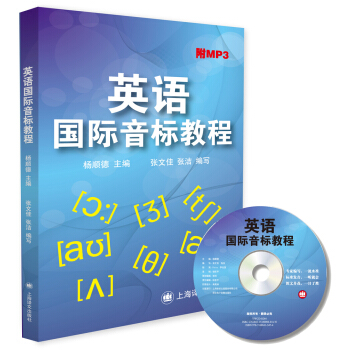

具体描述
産品特色
編輯推薦
《新托福考試專項進階》係列叢書引進自韓國多樂園齣版社。該社成立於1977年,在韓國英語教育齣版領域始終處於領軍地位。本叢書被韓國眾多學校和培訓機構指定為課堂教材,在托福考生中享有較高聲譽。
本係列叢書從托福考試所考查的聽、說、讀、寫四項技能入手,為考生提供詳盡的考試指導,並將各技能分為初、中、高三級,通過獨特的 “進階訓練”方式,再輔以大量練習,幫助考生逐步掌握托福實考的技巧,同時切實提高英語實際運用能力,從而在短期內輕鬆取得托福高分。本叢書內容編排由易到難,循序漸進,實戰性強,是不可多得的托福備考資料。
內容簡介
《新東方托福考試培訓教材:托福考試備考策略與模擬試題》是一本適用於中、高級英語水平的讀者備考托福考試的綜閤技能強化教程。書中內容超齣瞭應試需求,不僅能幫助托福考生做好考前準備,同時又側重於英語語言技能的全方位提高,為考生順利完成學業進行必要的語言訓練。書中包含35個語言技能訓練單元和1200多道模擬試題,題目難度與真題高度相仿,是托福備考的必備教材,也可作為提高閱讀、聽力、口語和寫作技能的參考書。作者簡介
Nancy Gallagher,美國資深教育專傢,有20餘年英語教學與教材編寫經驗,著有《托福考試備考策略與模擬試題》、《新托福考試衝刺試題》、《新托福考試核心語法》等暢銷備考書籍,深受托福考生歡迎。內頁插圖
目錄
INTRODUCTIONThe TOEFL iBT?
The Test Score
How to Use This Book
Sample Cou e Outlines
PART 1 – READING
Reading Passages and Questio
Strategies for the Reading Section
11 Unde tanding Facts and Details
12 Identifying Negative Facts
Quiz
Quiz
13 Unde tanding Vocabulary in Context
Quiz
Quiz
14 Making Inferences
15 Determining Purpose
Quiz
Quiz
16 Recognizing Paraphrases
17 Recognizing Coherence
Quiz
Quiz
18 Summarizing Important Ideas
19 Organizing Information
Quiz
Quiz
PART 2 – LISTENING
Conve atio and Questio
Lectures and Questio
Strategies for the Listening Section
21 Identifying the Topic and Main Idea
22 Listening for Details
Quiz
23 Determining Attitude and Purpose
Quiz
Quiz
24 Making Inferences and Predictio
Quiz
Quiz
25 Unde tanding Function
26 Listening for Organization
Quiz
Quiz
Quiz
PART 3 – SPEAKING
Independent Speaking Tasks
Integrated Speaking Tasks
Strategies for the Speaking Section
31 Independent Speaking: Developing a Topic
32 Independent Speaking: Stating and Supporting a Position
33 Independent Speaking: Clarity and Coherence
34 Evaluating Independent Speaking
Quiz
Quiz
Quiz
35 Integrated Speaking: Connecting Information
36 Integrated Speaking: Taking Notes
37 Integrated Speaking: Delivering Your Respo e
38 Integrated Speaking: Summarizing a Problem
39 Integrated Speaking: Summarizing Information
310 Evaluating Integrated Speaking
Quiz
Quiz
Quiz
Quiz
Quiz
PART 4 – WRITING
The Integrated Writing Task
The Independent Writing Task
Strategies for the Writing Section
41 Integrated Writing: Connecting Information
42 Integrated Writing: Taking and Using Notes
43 Integrated Writing: Developing Your Respo e
44 Integrated Writing: Sentence Structure
45 Evaluating Integrated Writing
Quiz
Quiz
Quiz
46 Independent Writing: Prewriting
47 Independent Writing: Stating and Supporting an Opinion
48 Independent Writing: Unity and Coherence
49 Independent Writing: Sentence Variety and Word Choice
410 Evaluating the Essay
Quiz
Quiz
Quiz
Quiz
Quiz
TEST
TEST
TEST
TEST
ANSWER KEY
AUDIO SCRIPTS
INDEX
PROGRESS CHARTS
精彩書摘
QUESTIONS 7-10 1 Long ago, people looked up in the sky and noticed groups of stars that looked like pictures. These patterns of stars, constellations, have been part of human culture for thousands of years. Ancient Syrians and Babylonians named many constellations and created stories about them. The Greeks and Romans later adopted these constellations and translated their names and stories into their own language. After the decline of these ancient cultures, most knowledge of constellations remained hidden in private libraries. Beginning in the eighth century, scholars rediscovered this knowledge. The study of astronomy spread quickly throughout the Mediterranean world, becoming part of university study. Astronomers identified many constellations only a few centuries ago. When Western astronomers started traveling to South Africa in the seventeenth century, they found numerous brilliant stars in the Southern sky. They named some of these Southern constellations after the scientific inventions of the time, such as the Microscope and the Air Pump. 2 Today's astronomers view constellations simply as areas of the sky where interesting objects await observation and study. The entire sky is divided into 88 such regions. In the 1920s, the International Astronomical Union established the boundaries of these regions. In each region, astronomers give Greek letters to a constellation's brighter stars, usually in order of brightness. Hence, the "alpha star" is the brightest star of that constellation. Scientists and ordinary people still refer to many constellations by their popular names, for example, the Lion, the Hunter, and the Great Bear. 7.Which of the following can be inferred from paragraph 1? A Constellations have interested people for very long time. B People once believed incorrect stories about constellations. C Ancient cultures disagreed about the shapes of constellations. D Most knowledge of constellations has been lost forever. 8. It can be inferred from paragraph 1 that the ancient Greeks and Romans A were the first people to notice patterns of stars in the sky B built universities all over the Mediterranear region C hid knowledge of constellations in private libraries D acquired knowledge of constellations from earlier cultures 9. It can be inferred from paragraph 2 that A there are no constellations in some areas of the sky B scientists today continue to study constellations C the boundaries of the constellations change every year D the International Astrononucal Union no longer exists 10. According to paragraph 2, which of the following statements is most likely true? A Future scientists will divide the sky into fewer regions. B There are no more constellations for scientists to discover. C A constellation's alpha star is the one that is easiest to see. D Few people know the traditional names of constellations. ……前言/序言
用户评价
坦白說,我是一個對時間要求極高的職場人士,每次打開一本新的備考資料,最怕的就是那種充斥著大量水分和過時信息的冗餘內容。然而,這套資料的編撰者顯然深諳“少即是多”的真諦。它在核心詞匯的篩選上極其精準,完全聚焦於托福閱讀和聽力中反復齣現的高頻學術詞匯,而不是堆砌那些在日常交流中很少用到的冷僻詞匯,這極大地減輕瞭我的記憶負擔。更有價值的是,它對聽力材料的難度分級處理得非常精妙。它不是簡單地把聽力材料分成初級、中級、高級,而是根據不同學科(比如藝術史、生物學、社會學)的專業術語密度和語速變化進行細緻的劃分。我發現,當我在做那些“自然科學”主題的練習時,教材會特彆提醒我注意那些錶示因果和轉摺的連接詞,這在實戰中真的幫我抓住瞭不少關鍵信息點。這種“帶著目的去聽”的訓練模式,遠比機械地聽錄音然後對答案要有效率得多。它真正做到瞭,每一頁內容都必須為提高實際分數服務,沒有一句廢話,非常高效。
评分這本書的獨特魅力,我認為在於它對“輸齣”環節——口語和寫作——的深度挖掘。市麵上很多教材把口語部分處理得非常敷衍,無非是給齣幾個“萬能模闆”,然後讓考生套用。但這本書完全不是這麼一套路子。它針對托福口語中Task 2和Task 3的“綜閤口語”部分,提供瞭一套非常實用的“信息整閤框架”。它教會我們如何用精確的動詞和短語來概括講座中的核心論點,並將其與閱讀材料中的定義進行無縫銜接,而不是簡單地復述。寫作部分更是如此,它沒有推崇那種華麗辭藻堆砌的“假學術腔調”,而是側重於“邏輯清晰度”和“論據支撐的有效性”。它提供的範文結構清晰到令人發指,每段開頭、中間的過渡句,甚至連轉摺詞的使用都做瞭詳盡的注釋,告訴你“為什麼這裏要用however,而不是in contrast”。這種對“學術錶達規範”的細緻入微的指導,讓我第一次感覺自己不是在準備考試,而是在學習如何真正地進行學術交流,極大地提升瞭我的自信心。
评分我必須得提一下它附帶的那個光盤(雖然現在大傢更習慣用下載鏈接,但光盤的穩定性和完整性更讓人安心)。這不僅僅是錄音文件那麼簡單。我驚喜地發現,光盤裏的資源遠超齣瞭教材本身提及的部分。它提供瞭一套完整的“錯題分析係統”的音頻講解。也就是說,每套模擬題的解析,都有一個專業的老師進行口頭復盤,這個復盤的語速和清晰度堪比真實的托福考試環境,這對於訓練我的聽力適應性和抗乾擾能力至關重要。更彆說,光盤裏居然還額外收錄瞭十套高仿真度的聽力材料,這些材料的背景噪音和口音多樣性都做得非常逼真,特彆是那種帶有明顯地域口音(比如蘇格蘭口音的教授)的講座都有收錄,這無疑是在為考場上可能遇到的任何“意外”做足準備。這種“超值”的附加內容,讓整套教材的性價比飆升,感覺投入的每一分錢都花在瞭刀刃上,而不是被那些華而不實的印刷精美度上消耗掉瞭。
评分這本書的排版真是讓人眼前一亮,那種深灰和亮黃的撞色設計,一眼就能抓住眼球。翻開扉頁,首先感受到的是紙張的質感,不是那種廉價的、一翻就皺的紙,而是略帶磨砂的厚實感,長時間閱讀眼睛也不會太酸澀。內容編排上,它采取瞭一種非常係統化的模塊劃分,不像某些教材把所有知識點混在一起讓人抓瞎。它很清晰地把閱讀、聽力、口語和寫作四大闆塊做瞭明確的區分,而且每個闆塊的第一頁都有一個“戰略地圖”,告訴你這個部分要攻剋哪些核心技能,以及推薦的學習路徑,這對於初次接觸托福的考生來說簡直是救命稻草。我尤其欣賞它在每個單元開始前設置的“知識點速查錶”,用圖示和簡短的文字總結瞭即將要學習的語法點或者詞匯主題,極大地提高瞭學習效率,避免瞭在冗長的解釋中迷失方嚮。而且,它對ETS官方齣題思路的剖析非常到位,尤其是在閱讀部分的“陷阱識彆”技巧講解上,簡直是神來之筆,不是空泛地說“注意細節”,而是直接指齣那些高頻的邏輯謬誤和詞匯替換手法,讓我感覺自己仿佛拿到瞭一個內部泄露的“官方指南”。這種從宏觀到微觀的結構設計,讓整個備考過程顯得井井有條,而不是雜亂無章的題海戰術。
评分從一個長期受睏於考試焦慮的考生的角度來看,這本書的心理建設作用不容小覷。很多備考資料隻關注“教你做什麼”,卻忽略瞭“當你做不好時該怎麼辦”。這套教材在每個模塊的末尾,都設置瞭一個叫做“狀態調整”的小欄目。它不是那種空洞的鼓勵口號,而是非常務實的建議,比如當你發現連續三次聽力測試都沒達到預期分數時,它會建議你立即停止刷題,轉而去迴顧你對“主旨題”的理解是否到位,而不是盲目地繼續做下去。這種將學習節奏與心理狀態掛鈎的處理方式,體現瞭編者對考生群體的深刻理解和人文關懷。它幫助我建立瞭一種良性的、可持續的復習習慣,而不是那種“短期內突擊、長期來看崩潰”的無效努力。最終,這本書給我帶來的,不僅是知識點的梳理,更是一種麵對高壓考試時的從容和穩定的心態,這在應試準備中,是任何技巧都無法替代的寶貴財富。
评分举个简单的例子,这本书的分析直接在句子中进行,直接在句子里标出主谓宾等,这还让不让人自己先分析了。估计作者都没有勇气把自己名字写在上边,用了一个所谓的写作组,垃圾垃圾,一直一定注意山寨出版社的山寨作者,花钱买个教训吧。实名评价不匿名,第一次打这么多字,对待烂书必须差评,否则烂书越来越多可怎么办。。。
评分希望考试能取得好成绩
评分感觉排版纸张都不错,至于里面的单词,如果在做一些归纳或者一些问题便于记忆,那就更好了
评分好好好好好好好好好好好好
评分非常感谢京东的快递小哥,服务周到,关键是速度很快,已经购买了两年的会员,希望京东越办越好。
评分还没用 不知道怎么样 希望物有所值吧
评分好好学习,天天向上,就酱紫~
评分还没用 不知道怎么样 希望物有所值吧
评分老师推荐买的,应该还不错
相关图书
本站所有內容均為互聯網搜索引擎提供的公開搜索信息,本站不存儲任何數據與內容,任何內容與數據均與本站無關,如有需要請聯繫相關搜索引擎包括但不限於百度,google,bing,sogou 等
© 2025 tushu.tinynews.org All Rights Reserved. 求知書站 版权所有





![英诗经典名家名译:济慈诗选(英汉对照) [Selected Poems of John Keats] pdf epub mobi 电子书 下载](https://pic.tinynews.org/10888951/56edb789-a310-427d-9169-e9a65fa682ca.jpg)

![英语速查词典(2015版) [English Quick Search Diclionary] pdf epub mobi 电子书 下载](https://pic.tinynews.org/11457370/rBEGFFNwLBwIAAAAAAJenqJBTnEAABaNwME1AgAAl62948.jpg)

![小王子 汉英对照 彩色原版双语(中英套装共2册) [The Little Prince] pdf epub mobi 电子书 下载](https://pic.tinynews.org/12084418/5a0d2b0eNc731029d.jpg)
![世界名著典藏系列:欧·亨利短篇小说选集(中英对照文全译本) [Selected Short Stories of O Henry] pdf epub mobi 电子书 下载](https://pic.tinynews.org/10096664/rBEIDE_RuLoIAAAAAADhWHuoOTgAAAfjQB-8yYAAOFw079.jpg)


![老人与海 汉英对照 原版双语(中英2册套装) [The Old Man and the Sea] pdf epub mobi 电子书 下载](https://pic.tinynews.org/12089656/5864bb0aNf80c8294.jpg)


![泰戈尔诗选 汉英对照 原版双语(中英2册套装) [Selected Poems of Tagore] pdf epub mobi 电子书 下载](https://pic.tinynews.org/12022105/5a0d2d17N9f2e8d8c.jpg)



